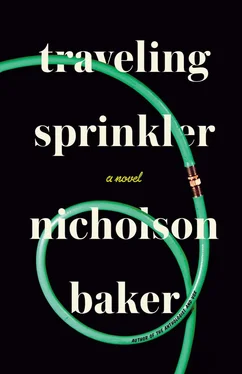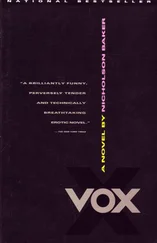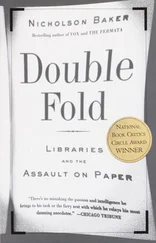Nicholson Baker - Traveling Sprinkler
Здесь есть возможность читать онлайн «Nicholson Baker - Traveling Sprinkler» весь текст электронной книги совершенно бесплатно (целиком полную версию без сокращений). В некоторых случаях можно слушать аудио, скачать через торрент в формате fb2 и присутствует краткое содержание. Год выпуска: 2013, Издательство: Blue Rider Press, Жанр: Современная проза, на английском языке. Описание произведения, (предисловие) а так же отзывы посетителей доступны на портале библиотеки ЛибКат.
- Название:Traveling Sprinkler
- Автор:
- Издательство:Blue Rider Press
- Жанр:
- Год:2013
- ISBN:нет данных
- Рейтинг книги:3 / 5. Голосов: 1
-
Избранное:Добавить в избранное
- Отзывы:
-
Ваша оценка:
- 60
- 1
- 2
- 3
- 4
- 5
Traveling Sprinkler: краткое содержание, описание и аннотация
Предлагаем к чтению аннотацию, описание, краткое содержание или предисловие (зависит от того, что написал сам автор книги «Traveling Sprinkler»). Если вы не нашли необходимую информацию о книге — напишите в комментариях, мы постараемся отыскать её.
Traveling Sprinkler — читать онлайн бесплатно полную книгу (весь текст) целиком
Ниже представлен текст книги, разбитый по страницам. Система сохранения места последней прочитанной страницы, позволяет с удобством читать онлайн бесплатно книгу «Traveling Sprinkler», без необходимости каждый раз заново искать на чём Вы остановились. Поставьте закладку, и сможете в любой момент перейти на страницу, на которой закончили чтение.
Интервал:
Закладка:
Fifteen
THIS IS WHAT I MEAN. The experts do not know what they’re talking about. They say we should eat margarine, not butter, and that if you can pinch an inch of your husband’s arm, chances are he’s too fat. And then they say margarine’s bad because it’s full of trans fat. They say drinking destroys brain cells, and then that turns out to be totally bogus, based on no research, and we’re supposed to have two drinks a day. They say spinach is full of iron, when really they should be talking about molasses. Same with the singing voice. They record the vox humana as vox humono because it’s always been done that way. It allows them to place the voice at dead center in the stereo space. If the lead singer sways from side to side, carried away by the beat, the sound stands still. That’s very convenient, but it’s wrong. Of all sounds, the human voice is the sound that we hear best, just as faces are the sights we see best. The slight skeptical contraction at the corners of the eyes, the tiny, indulgent almost smile — we’re immediately aware of those clues, because we’re born experts at reading faces. And likewise we hear a hundred subtle clues in a singing voice, clues about love and regret and rapture, and some of those clues are dulled or lost in mono.
Stereo recording was the biggest revelation of my life, bigger than any poem. Listening to our mono record player was pleasant, but everything was tinny and far away. When I was six I had a record of Prokofiev’s Peter and the Wolf —the part of the grandfather is played by the bassoon — and a record of Brazilian drumming called Batucada Fantástica , and I played my father’s copy of Bach’s Art of the Fugue . I was taking piano lessons by then, and I was fascinated by the idea of inverting a melody, making the notes go down when they originally went up, and up when they originally went down. Then the craziness hit. The Beatles hit, and Leonard Bernstein hit, and 2001: A Space Odyssey used Strauss’s Zarathustra , and my father subscribed to Stereo Review , and I began drumming Batucada Fantástica rhythms on a large cardboard tube. One summer we got a set of Bose 501 speakers and a minimalist AR turntable with a visible rubber band that turned the platter — AR stood for Acoustic Research — and a Yamaha stereo receiver, and a set of white JVC headphones. Both earpieces had volume dials, so that you could crank the volume up or down on each side. I put the headphones on, and I lowered the needle on Zubin Mehta conducting The Rite of Spring , and suddenly I was there, enclosed in the oxygenated spatial spread of stereophonic sound. I was there with the panicked piccolo, and the bass clarinet was a few feet away, and the timpani surged over to the left, mallets going so fast you couldn’t see them. I couldn’t believe how big a world it was — how much bigger and better stereo was than mono. The human ear had figured out something many eons ago, millions of years ago, in the sacred springtime of the world, long before there were humans, in fact — something basic that very smart scientists took a while to figure out: You need two ears. You need to sample how a sound changes when you move your head slightly. If you move your head, then you can determine what’s behind you and what’s in front of you. You hear a cracking twig somewhere off to the far right. Something’s out there. Is it a barking deer? No, it’s Igor Stravinsky, giving us the super-high-pitched bassoon solo that begins the convulsion.
• • •
THE RITE OF SPRING caused problems for Debussy. It blew him out of the water. It frightened him. It made him feel old. It used motifs and harmonic innovations that Debussy had first used in “Nuages,” but it went much further with them. There’s a photo of Debussy and Stravinsky side by side in Debussy’s apartment. I assume they’ve just played the four-hand piano reduction of The Rite of Spring together. Debussy, standing, looks thoughtful, perhaps tired. He’s sinking. He knows he’s got cancer. He’s been taking morphine and cocaine. Hokusai’s wave is hanging on the wall behind him. Stravinsky looks arrogant and cocky. Stravinsky was, in fact, arrogant and cocky. He was a cold man. He was not nice to his children. Robert Craft wrote that he was surprised, years later, when Stravinsky clanged on a wineglass with his knife to summon a waiter.
For a while, everything Stravinsky did, he did with Debussy in mind. I think that’s why he chose the bassoon to play the solo that begins The Rite of Spring . It’s a simple pagan melody — you can play it all on the white keys of the piano — and the logical instrument to play it would be a flute. Ah, but he couldn’t: Debussy had already created a sensation with Afternoon of a Faun , inspired by Mallarmé’s frisky erotic poem, which begins with — what instrument of the orchestra? Anyone. A solo flute, exactly. Debussy’s flute was a lithe, twisty, innocently suggestive danseuse, who went here and there, through some sharps and flats, showing a bit of leotard, and then the orchestra came in to help out, and then the solo flute returned. Stravinsky’s beginning was a sort of ironic commentary on Debussy’s flute. He knew the bassoon could do it — he’d already had a success with the huge bassoon solo in The Firebird Suite , which is a berceuse, a lullaby: a very simple solo in the mid-range of the bassoon that begins on a B flat and goes no higher than a high F. I played it once with a youth orchestra, doing my best to sound like Bernie Garfield in Philadelphia. It’s warm and loving and faintly exotic and soft-feathered over the violas, and then the whole orchestra comes in with a chord that’s impossibly lush and chromatic, chromaticism that Liszt, Chopin, Mussorgsky, and Scriabin might have come up with if they’d all been locked in a water closet together for several days, and then he goes back to Firebirding sadly and plainly with the bassoon. That’s the way the Russians would do it. Rimsky-Korsakov would have done it that way. The bassoon is mother Russia, souped up for export to Paris.
But at the same time as he was writing Firebird , Stravinsky was working on The Rite of Spring . And he thought, Here’s what I’m going to do this time. This’ll really get the Frenchies. I’m going to take the whole nineteenth century and all of its comfortable clubby conveniences — its umbrellas, its empire wainscoting, its pigeonhole desks, its velvet cases of surgical tools, its reassuringly civilized chamber concerts — and I’m going to use the bassoon with its keys and its pads and its maplewood smoothness to sum all that up, but then I’m going to torture it. I’m going to pitch it up high where the flute normally plays. I’m going to make the music strain to achieve its innocence. I’m going to start on a high C, way up in the impossible uppermost register of the bassoon, and then I’ll take it even higher and ask for a high D. It’ll almost sound like a flute — Rimsky-Korsakov had said in his book on orchestration that the high bassoon can sound rather like a flute, and it does — but it won’t be a flute, it’ll be the agonized first-desk bassoonist, who must struggle with every tendon showing in his neck to reach that high D, leaking air around the reed, ignoring the patronizing backward glances from the cellos. Debussy knew what was going on. He knew that The Rite of Spring was in some ways a direct attack on his and Mallarmé’s flora-and-faunish pan-pipingly impressionistic idea of springtime. He wrote a letter to somebody after he’d played the piano-four-hands version with Stravinsky and said he was disturbed at its violence. Debussy must have sensed what was happening and been irritated by it, as well as jealous: the falling chromaticism of his gentle flute solo replaced by this sweating, straining mop-headed bassoonist who leads the way for the sonic pandemic to follow. Just to make the connection perfectly clear, Stravinsky uses a flute to play part of the melody once. And then he returns to the bassoon to reprise it, half a step lower. It’s even harder to play shifted down a half step.
Читать дальшеИнтервал:
Закладка:
Похожие книги на «Traveling Sprinkler»
Представляем Вашему вниманию похожие книги на «Traveling Sprinkler» списком для выбора. Мы отобрали схожую по названию и смыслу литературу в надежде предоставить читателям больше вариантов отыскать новые, интересные, ещё непрочитанные произведения.
Обсуждение, отзывы о книге «Traveling Sprinkler» и просто собственные мнения читателей. Оставьте ваши комментарии, напишите, что Вы думаете о произведении, его смысле или главных героях. Укажите что конкретно понравилось, а что нет, и почему Вы так считаете.












